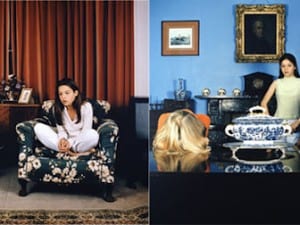In 2023, UN chief Antōnio Guterres declared: “The era of global warming has ended. The era of global boiling has arrived.” A year later, all evidence suggested that he was correct. 2024 was the hottest year on record, and according to the UN, more than 150 “unprecedented” climate disasters occurred over the course of the 12 months. These incidents included life-threatening heatwaves in Australia, Iran, Japan and Mali, as well as record floods in Italy, Senegal and Pakistan. Hurricane Helene was the strongest storm ever recorded in Florida’s Big Bend region, whilst 3.6 million people were hit by Super Typhoon Yagi in Vietnam. The world is facing catastrophic change. 22 April marks Earth Day, an international event first held in 1970 that encourages communities to show support for environmental protection. Contemporary artists and creatives are are the forefront of this movement, using their platform to call for a better relationship with the planet. This year, we’re sharing 10 landmark artist, whose powerful and insightful works are shaping conversations around sustainability.
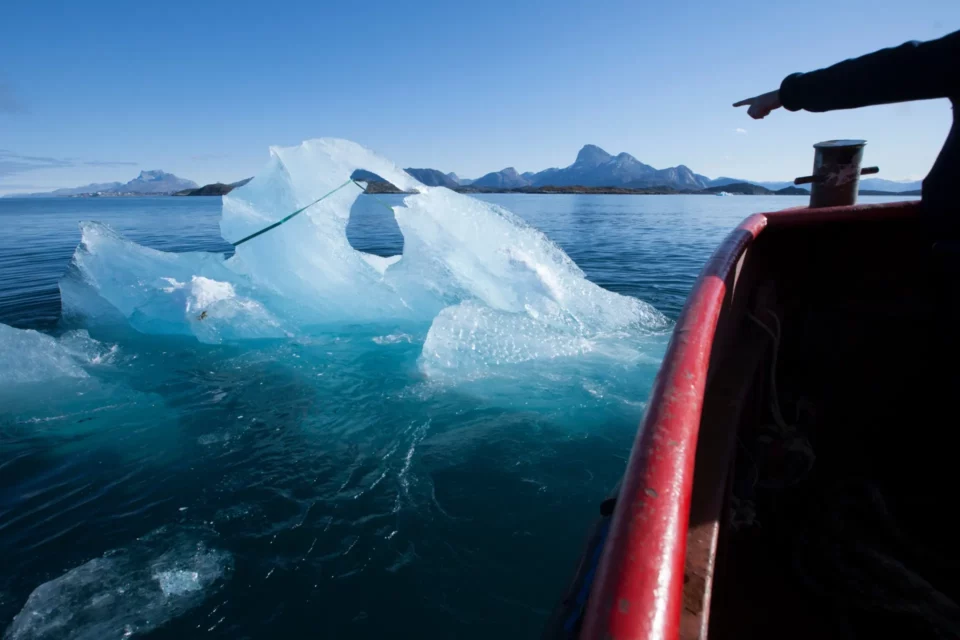
Olafur Eliasson & Minik Rosing
In 2014, the United Nations Intergovernmental Panel on Climate Change published its Fifth Assessment Report. It stated that “human influence on the climate system is clear, and recent anthropogenic emissions of greenhouse gases are the highest in history.” At the same time as these findings were confirmed, 12 large blocks of ice were installed at Copenhagen’s City Hall Square. They were part of a project from artist Olafur Eliasson (b. 1967) and geologist Minik Rosing. The ice was taken from a Greenland fjord outside Nuuk and presented in a clock formation, providing audiences with a direct and tangible experience of the reality of melting arctic ice. The piece went on to appear in Paris during the COP21 Conference and in front of Tate Modern in London. The installation is part of Eliasson’s career-long commitment to environmental activism. Perhaps his most famous work is The Weather Project (2003), which encouraged more than 2 million visitors to Tate Modern to consider their relationship with the climate.
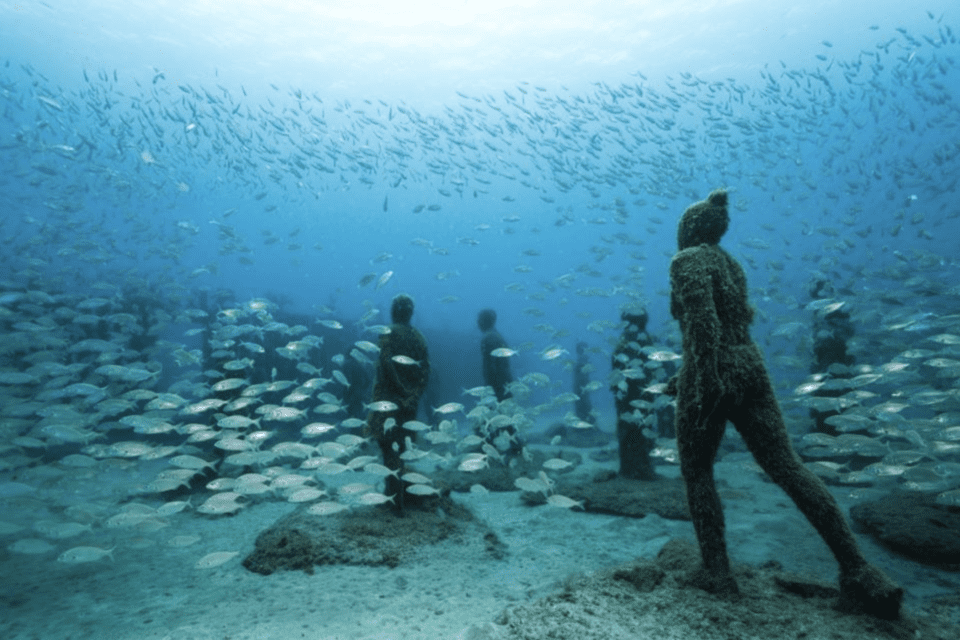
Jason deCaires Taylor
Museo Atlántico is the first underwater art museum in Europe and the Atlantic Ocean. The monumental project, created by sculptor Jason deCaires Taylor (b. 1974), took over three years to meticulously plan and construct. It includes more than 300 life-sized casts of people placed on an area of previously barren seabed. Over time, the pH neutral concrete structures have turned into living sculptures – akin to an underwater botanical garden. The formations are configured so that they become anchors for new coral growth, attract local species and create new ecosystems. The eerily lifelike sculptures are a visual dialogue between art and nature. Taylor uses the work to question the commodification of natural resources and raise the alarm of current threats. A particularly arresting section is The Human Gyre, where 200 figures are trapped in an oceanic current, embodying our vulnerability to the water’s power.
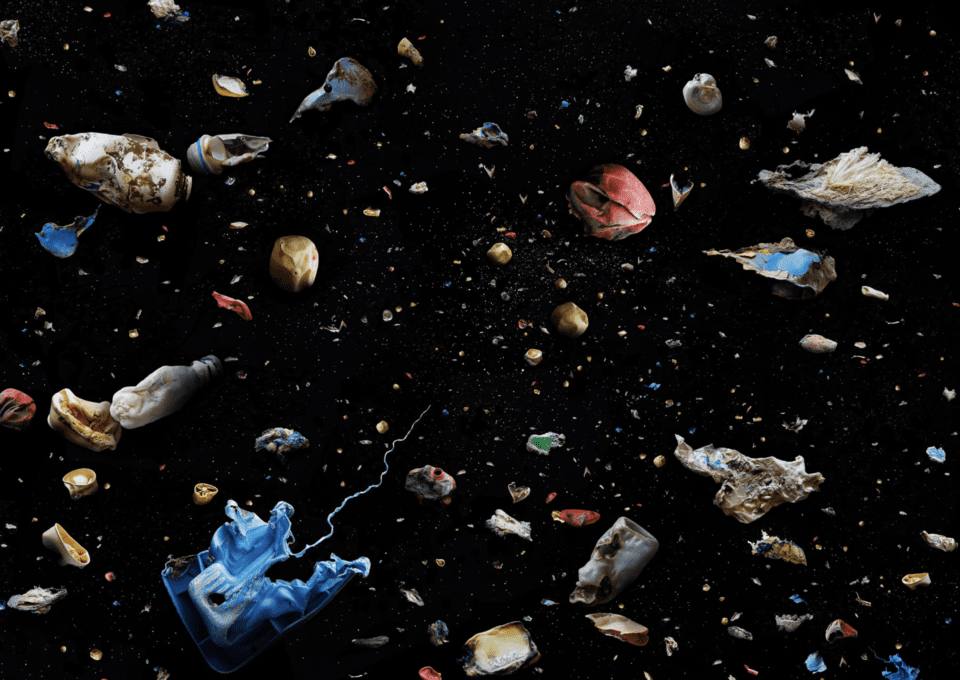
Mandy Barker
“Soup” is a description given by scientists to plastic debris suspended in the ocean. In particular, it is used in reference to an area of the North Pacific Ocean known as the “Garbage Patch,” which is three times the size of France. Mandy Baker (b. 1964) responds to these sites of ecological catastrophe. The artist has been creating photographic works that involve plastic waste for 15 years. She works with scientists to raise awareness about pollution, highlighting its harmful effect on marine life and humanity. The series Soup was created from rubbish salvaged from beaches. Barker’s images may be aesthetically pleasing, but a closer look is a sobering experience and her captions reveal the reality behind the façade. In one, a constellation of blue toy turtles float on a black background. They were among the 28,800 children’s bath toys that washed overboard from the “Evergreen Ever Laurel” on 10 January 1992. Elsewhere, Burnt shows the result of attempts to dispose of unwanted plastic through fire.
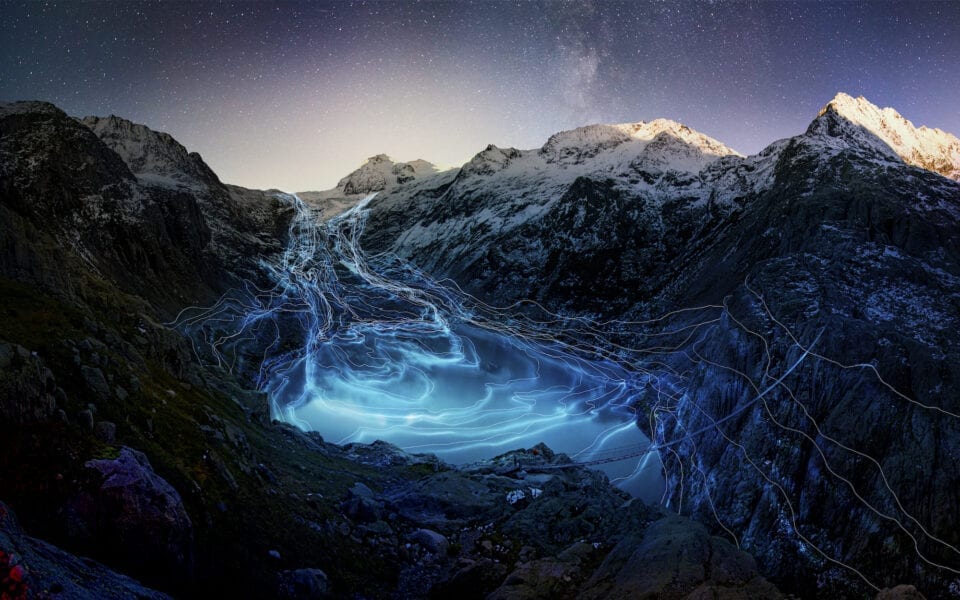
Fabian Oefner
Fabian Oefner’s (b. 1984) immersive project maps out the ever-shrinking dimensions of two glaciers, one at Rhône and another at Trift, taking data from the last 140 years. The online commission, which was created as part of the Google Arts & Culture’s Heartbeat of the Earth series, interprets statistics to render natural processes and the beauty of topographies. The interactive exploration of the glacier clearly show the same thing: the ice is receding shockingly fast. The artist notes: “I used to go hiking on the glaciers and I saw how much they had diminished.” The work pushes the boundaries of art, design and technology, as Oefner says: “To me, art and science are not so different, because both try to look at the world and comprehend it. But often people can’t make a connection, they just see numbers and data. I hope that, as an artist, I can explain what the data means and help them connect with it.”
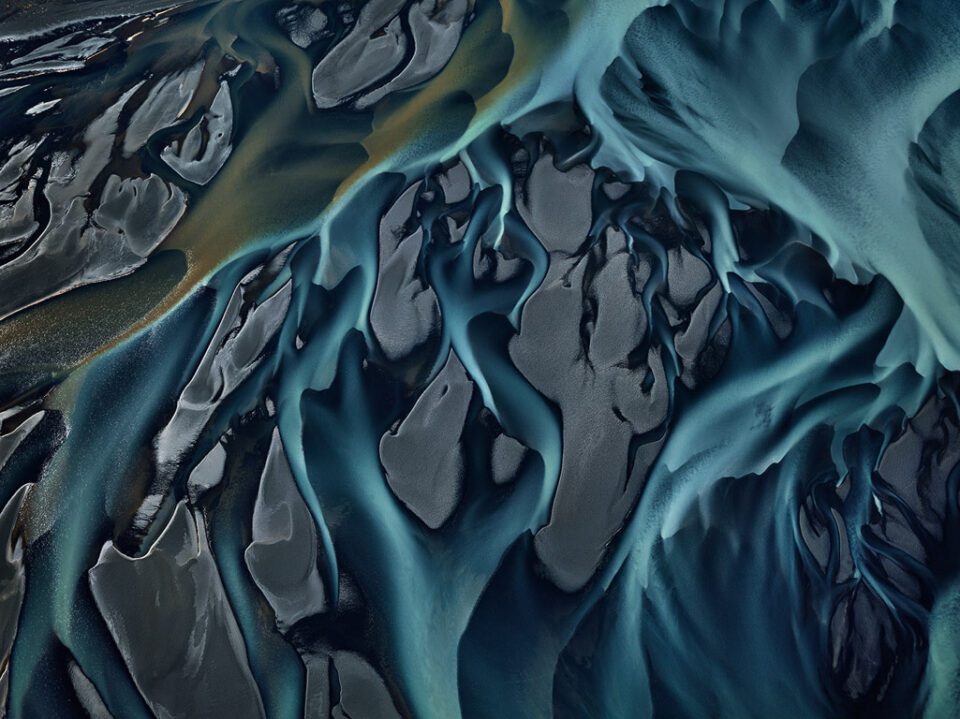
Edward Burtynsky
“While trying to accommodate the growing needs of an expanding, and very thirsty civilisation, we are reshaping the Earth in colossal ways,” says artist Edward Burtynsky (b. 1955). “In this new and powerful role over the planet, we are also capable of engineering our own demise.” In May 2010, BP’s Deepwater Horizon began pouring millions of barrels of oil into the Gulf of Mexico, and Burtynsky travelled to the location to capture the event. The result is a series of abstract and beautiful images that record a horrifying ecological disaster. Burtynsky included these pictures in Water, a photographic essay that is split into chapters, ranging from the oil spill to Waterfront, a collection that speaks to humanity’s desire and need to be near water, even if artificial. Elsewhere in Water, Burtynsky takes viewers to India, to witness the largest pilgrimage on the planet with 35 million people arriving to bathe in the Ganges. The overall result is a portrait of how almost every aspect of life is intertwined with water.
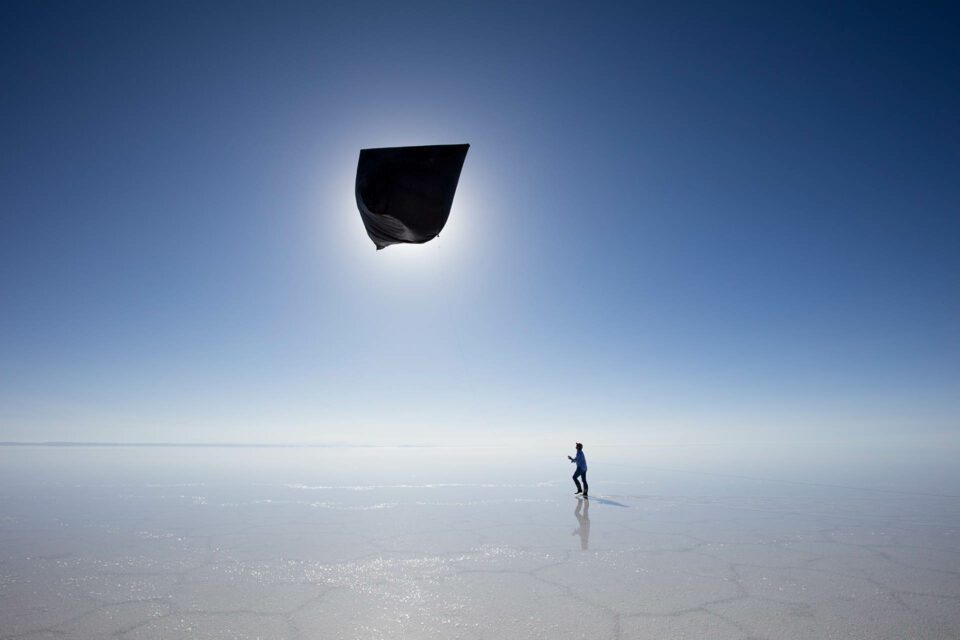
Tomás Saraceno
Flying gardens. Cloud cities. Oceans of air. Aerocene performances. These are works by Argentina-born, Berlin-based Tomás Saraceno (b. 1973), a creative whose practice spans art, activism, innovation and scientific research. As founder of Aerocene Foundation (2015 – present), he is dedicated to working towards a society free from carbon emissions, guided by a just and eco-social energy transition. It’s a response to stark facts about air pollution, which is expected to double – even triple – if unmitigated by 2050. Saraceno and his studio work in collaboration with global communities, like the Indigenous populations of Salinas Grandes and Laguna de Guayatayoc, Jujuy, Argentina, to share different ways of thinking about nature with wider audiences. The artist’s project, Web(s) of Life, was first on display at Serpentine Gallery in 2023. The collaborative exhibition took inspiration from spiders, delving into how different life forms, technologies and energy systems are connected in the climate emergency.
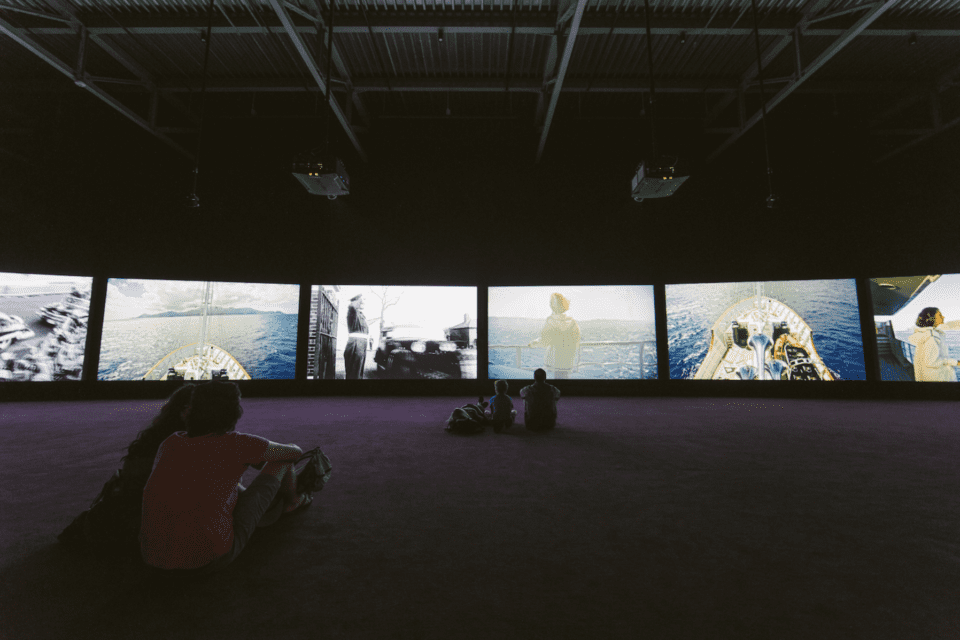
John Akomfrah
John Akomfrah (b. 1957) is one of the UK’s most revered filmmakers, whose work grapples with race, politics and post-colonialism. In 2019, the British-Ghanaian artist produced Purple, an immersive six-channel video installation as part of a commission from the Institute of Contemporary Art, Boston. The piece draws from hundreds of hours of archival footage, combining it with newly shot film and a hypnotic sound score to address climate change and its effects on human communities, biodiversity and the wilderness. It features various disappearing landscapes, from the hinterlands of Alaska and the desolate environments of Greenland to the Tahitian Peninsula and volcanic Marquesas Islands in the South Pacific. It not only spans the globe, but also traverses a vast timespan, stretching from images of the industrial revolution, such as factories, mills, machines and mass employment, to the dawn of the digital era.

Sharbendu De
Delhi-based photographer Sharbendu De (b. 1978) addresses a key problem with air pollution: it cannot usually be seen, only felt. The artist said: “millions of people in New Delhi and cities across the world suffer from the hazardous consequences of air pollution. Yet, we carry on with business as usual until smog takes over our lungs and lives.” An Elegy for Ecology visualises a reality overtaken by environmental crisis, forging a deeper understanding of climate change and its adverse effects. In some images, vast cityscapes are cloaked in a thick fog, obscuring the sunlight and casting a grey hue across everything. Elsewhere, De takes the viewer inside these buildings and homes, where plants, animals and humans coexist in domestic settings. In one, a man wears a mask to shield his face from the atmosphere, sitting upon a thick bed of moss. De explains: “I speculate a future where heat waves and air toxicity has accelerated extinction of floral and faunal species and confined us indoors.”
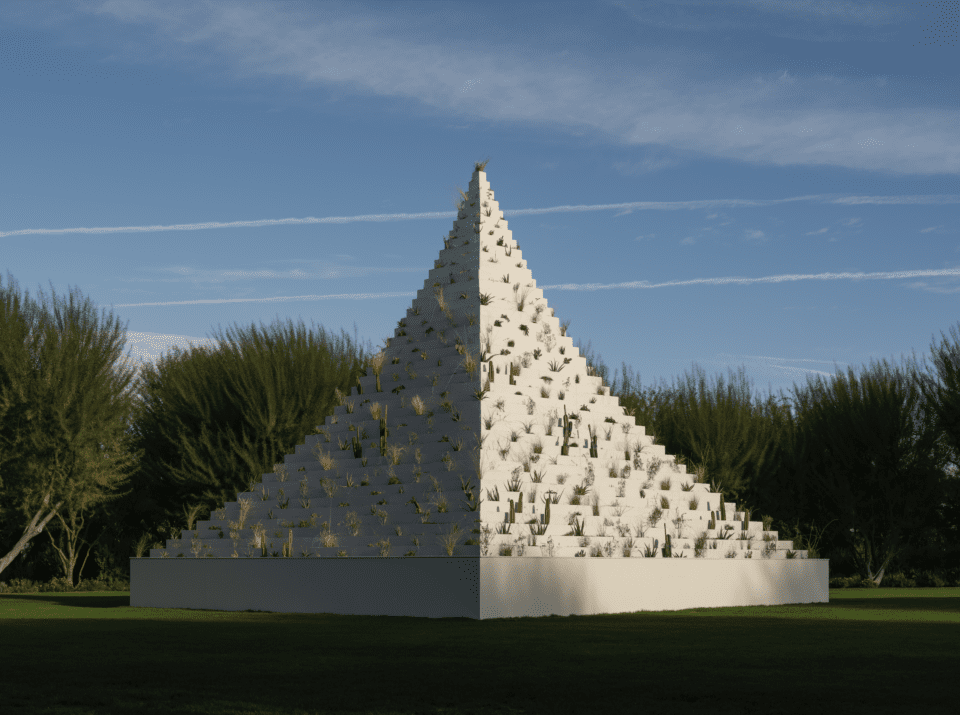
Agnes Denes
In 1968, Agnes Denes’ (b. 1931) unveiled the piece Rice/Tree/Burial. Curator and historian Peter Selz credited the work as “probably the first large scale site-specific piece anywhere with ecological concerns.” The artist has been at the forefront of environmental activism ever since. This latest work, presented as part of Desert X biennial, brings together the natural and the man-made. The pyramid, often a symbol of ancient civilisation and human achievement, has been central to Denes’ practice for more than half a century. Here, the shape is covered with vegetation native to the Californian desert. Its structure and appearance transforms in sync with the life cycles of the plants. Over six months, the plants will sprout and bloom. Some will go to seed, and some will die. For Denes, this process serves as a powerful visualisation of the organic development that happens in the natural world.

Nick Brandt
Nick Brandt (b. 1964) is a British photographer known for recording the planet’s rapidly disappearing green spaces. His oeuvre show how human environmental destruction has led to the climate crisis. The Day May Break is a series which spans Bolivia, Kenya, Zimbabwe and now Fiji. It portrays animals and people affected by humanity’s destructive impact on nature. The third chapter of the series, Sink / Rise, serves as a stark reminder of the looming reality facing many island nations. Images shot underwater, off the coast of the South Pacific Islands, represent inhabitants whose homes, lands and livelihoods may be lost in the coming decades as sea levels increase.Those photographed sit on chairs and benches, or play on a seesaw. The banality of these situations is made absurd by their submergence in the sea, reminding viewers that people are trying to live normal lives, whilst disaster heads their way.
Words: Emma Jacob
Image credits:
2. Ice Watch, 2014. Photo: Jørgen Chemnitz.
3. Museo Atlántico Jason deCaires Taylor.
4. SOUP: Burnt. Ingredients; all plastics partially burnt.
5. Timelines – Trift Glacier, (2019). © Fabian Oefner.
6. Thjorsá River #1, Iceland, 2012.
7. Tomás Saraceno, Endless Blue II, (2006). Courtesy the artist. Photography by Studio Tomás Saraceno.
8. Installation view, John Akomfrah: Purple, ICA Watershed, Boston, 2019. Courtest Lisson Gallery. Photo by Meg Elkinton © Smoking Dog Films.
9. Dzukou Valley, An Elegy for Ecology, 2021.
10. Desert X 2025 installation view of Agnes Denes, The Living Pyramid at Sunnylands Center & Gardens, photo by Lance Gerber, courtesy Desert X.
11. Onnie and Keanan on Seesaw, Fiji, 2023 by Nick Brandt ©




